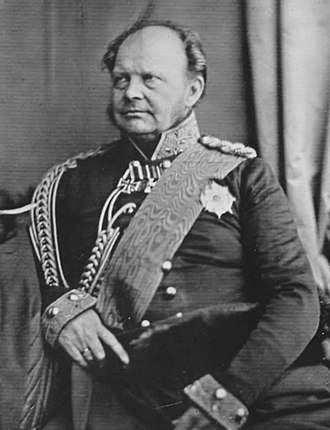by Scott Mehl © Unofficial Royalty 2019
Kingdom of Prussia: The Protestant Franconian branch of the House of Hohenzollern ruled as Margraves of Brandenburg, Dukes of Prussia, Electors of Brandenburg, Kings of Prussia from 1415 until 1918. In November 1700, in exchange for supporting the Holy Roman Empire in the Spanish War of Succession, Leopold I, Holy Roman Emperor agreed to allow Friedrich III, Duke of Prussia, Elector of Brandenburg to make Prussia a kingdom and become its first king. In the aftermath of World War I, Prussia had a revolution that resulted in the replacement of the monarchy with a republic. Wilhelm II, German Emperor, King of Prussia abdicated on November 9, 1918.
The Kingdom of Prussia had territory that today is part of Belgium, the Czech Republic, Denmark, Germany, Lithuania, the Netherlands, Poland, Russia, and Switzerland. All or parts of the following states of today’s Germany were part of the Kingdom of Prussia: Brandenburg, Hesse, Lower Saxony, North Rhine-Westphalia, Saarland, Saxony-Anhalt, and Schleswig-Holstein.
********************

source: Wikipedia
Friedrich Wilhelm IV, King of Prussia
King Friedrich Wilhelm IV reigned from 1840 until 1861. He was born at the Crown Prince’s Palace in Berlin, Kingdom of Prussia, now in the German state of Brandenburg, on October 15, 1795, the eldest son of Friedrich Wilhelm III, King of Prussia, and Luise of Mecklenburg-Strelitz. Friedrich Wilhelm had eight younger siblings:
- Wilhelm I, German Emperor (1797-1888) – married Augusta of Saxe-Weimar-Eisenach, had issue
- Princess Charlotte (1798-1860) – married Nicholas I, Emperor of All Russia, had issue
- Princess Friederike (1799-1800) – died in infancy
- Prince Carl (1801-1883) – married Princess Marie of Saxe-Weimar-Eisenach, had issue
- Princess Alexandrine (1803-1892) – married Paul Friedrich, Grand Duke of Mecklenburg-Schwerin, had issue
- Prince Ferdinand (1804-1806) – died in childhood
- Princess Luise (1808-1870) – married Prince Frederik of the Netherlands, had issue
- Prince Albrecht (1809-1872) – married (1) Princess Marianne of the Netherlands, had issue; (2) Rosalie von Rauch, Countess of Hohenau, had issue
As he was directly in the line of succession, Friedrich Wilhelm was given a broad education by numerous private tutors, as well as a military education in the Prussian Army. Early in life, he developed interests in architecture and the arts and later in life served as patron of several artists, including famed composer Felix Mendelssohn.

Elisabeth Ludovika of Bavaria. source: Wikipedia
In Berlin, on November 29, 1823, Friedrich Wilhelm married Princess Elisabeth Ludovika of Bavaria, the daughter of King Maximilian I Joseph of Bavaria and Princess Caroline of Baden. Aside from one stillborn birth, the couple had no children.
Friedrich Wilhelm became King of Prussia upon his father’s death on June 7, 1840. As his father had done himself, the new King changed many of his father’s policies – including reducing the censorship of the press and promising to provide a new constitution for the Prussian people.
In 1849, the King was offered the title Emperor of the Germans but refused as he did not feel it was the right of the Frankfurt Parliament to offer it. His dream was to instead reestablish the Holy Roman Empire, where a College of Electors would hold the authority to name an Emperor. Some years later, his successor, Wilhelm I, became the first German Emperor (Kaiser).

Stolzenfels Castle. photo: By Holger Weinandt – Own work, CC BY-SA 3.0 de, https://commons.wikimedia.org/w/index.php?curid=40032919
King Friedrich Wilhelm IV is perhaps best known for his contributions to architecture and the buildings he had constructed. These included:
- The Old National Gallery in Berlin
- The New Museum in Berlin
- The Orangery Palace in Sanssouci Park, Potsdam
- reconstruction of Stolzenfels Castle
- reconstruction of Hohenzollern Castle
- the completion of the Cologne Cathedral
In July 1857, the King suffered several strokes from which he never fully recovered. Eventually, in October 1858, he appointed his brother and heir, as Regent. A further stroke in November 1859 left him partially paralyzed and unable to speak, and another the following November left him mostly unconscious. Following one last stroke, King Friedrich Wilhelm IV died on January 2, 1861, in Potsdam, Kingdom of Prussia, now in Brandenburg, Germany. He was buried in the crypt beneath the Friedenskirche (Church of Peace) in Sanssouci Park, Potsdam, and his heart was placed in the mausoleum at Charlottenburg Palace, beside the tombs of his parents.
This article is the intellectual property of Unofficial Royalty and is NOT TO BE COPIED, EDITED, OR POSTED IN ANY FORM ON ANOTHER WEBSITE under any circumstances. It is permissible to use a link that directs to Unofficial Royalty.
Prussia Resources at Unofficial Royalty
